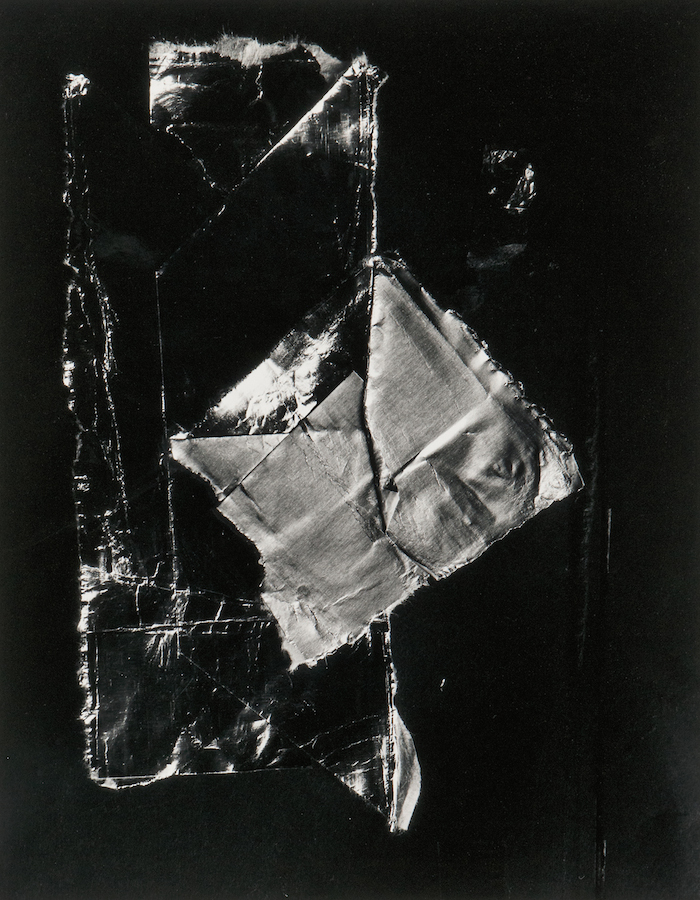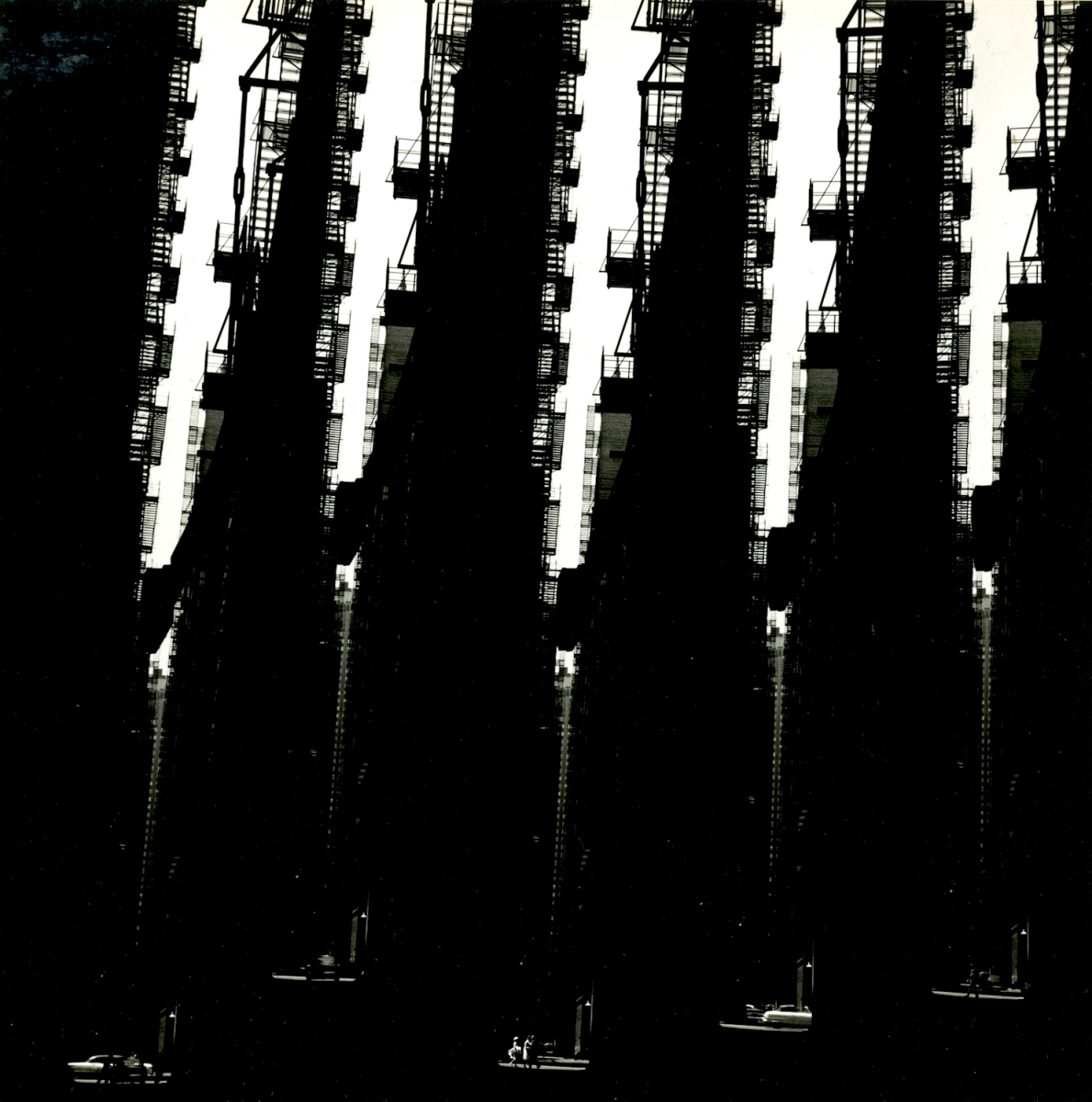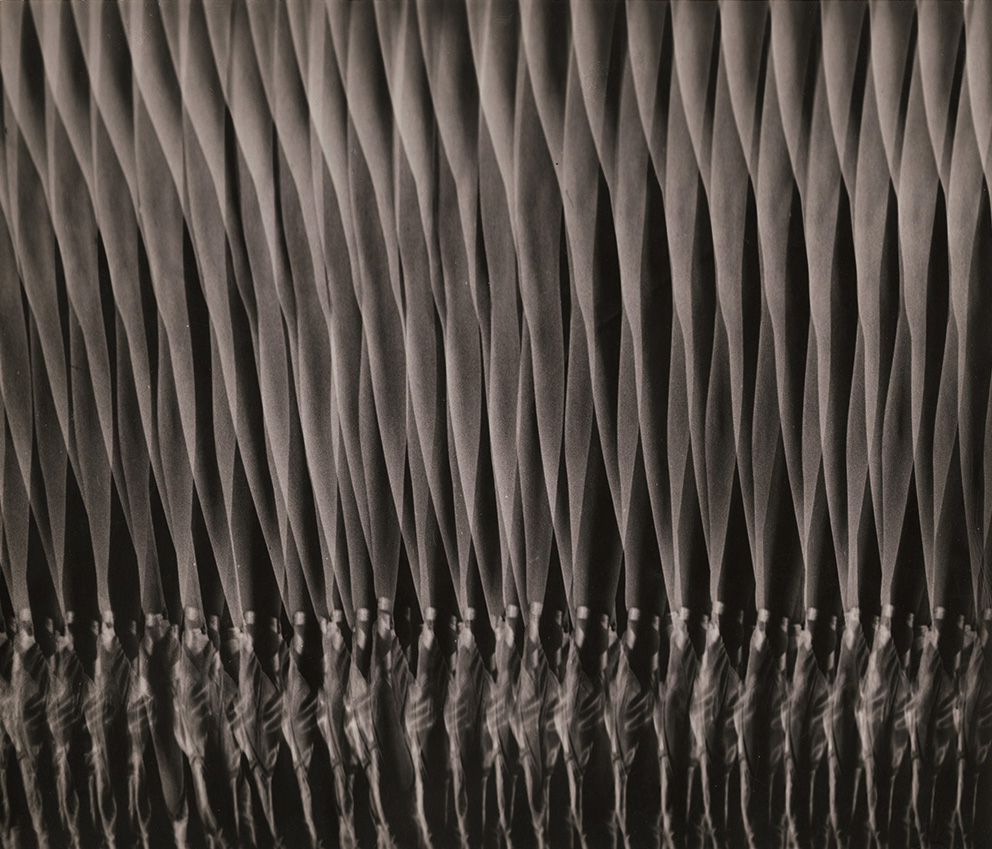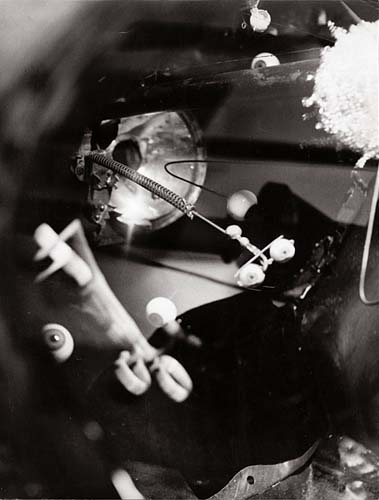In one sense all photographs are abstractions. A photograph frames a specific portion of reality. The final image is abstracted from the whole. This is a completely unique approach to making art and is endemic to the medium. All painting before the invention of photography tells a complete visual story--comprehensive, all-inclusive. Degas, who was influenced by photography, made paintings at horse races, which awkwardly and purposefully cropped figures at the edges of the canvas forcefully implying the continuing world beyond.
Photography in the first decade of the 20th century shows a youthful desire to move away from the traditional. Photographers began an intense period of experimentation. In a late issue of Camera Work Sadakichi Hartmann begged for a more modernist approach. What became important was the detail that stands for the whole: the dynamic and geometric shapes of the modern world defined by vibrant light and deepest shadow. Paul Strand's Wall Street, and Stieglitz's series of the New York skyline taken at night are just a few seminal images that began to point in the direction of pure abstraction.
Perhaps we also owe our earliest steps toward pure abstraction to Alexander Rodchenko. In the spirit and energy of the Russian Revolution, Rodchenko saw that his world had taken on an entirely new perspective, deserving of new visual perspectives. Recognized as the inventor of a bird's eye view and a worm's eye view, Rodchenko and other constructionists made photographs that radically challenged viewers' understanding of what was before their very eyes. Reality could be distorted by a camera angle to show a different reality.
After WWI artists across the board saw that the world had evolved into something almost unrecognizable. Dada and Surrealist artists often put down their brushes and picked up the camera as a perfect portable tool for capturing fragments of a world fragmented by war. They experimented and exploited photography's potential for layering images in multiple exposure and montage. Or, as an even more radical departure from reality, they left the camera behind and experimented with pure light and shadow cast and captured on light-sensitive photographic paper, in the process reinventing the notion of a photogram by making it modern, by making it abstract.
Modernist photographers also began to realize that pure photographic abstractions could be made using 'straight' methods. Come in close, use an unusual angle of view, carefully frame (or abstract) the line, the shadow, the geometric and organic shapes and forms that exist in everyday objects like chairs, bowls, automobiles, or nature itself (magnified to gigantic proportions--a la Blossfeldt) and you have landed in the world of pure abstraction. A wall with its cracks, graffiti and peeling paint can be raised to iconic levels by a photographer steeped in the craft of his medium. An intelligent understanding of the beauty and simplicity of pure design helped to contribute to this stage of abstraction.
Later technological advances, such as the motor drive, wide-angle lens and finally digital technology, have shaped the current state of photographic abstractions.
Exhibited and Sold By
Contemporary Works / Vintage Works, Ltd.
258 Inverness Circle
Chalfont, Pennsylvania 18914 USA
Contact Alex Novak and Marthe Smith
Email info@vintageworks.net
Phone +1-215-518-6962
Call for an Appointment














Share This